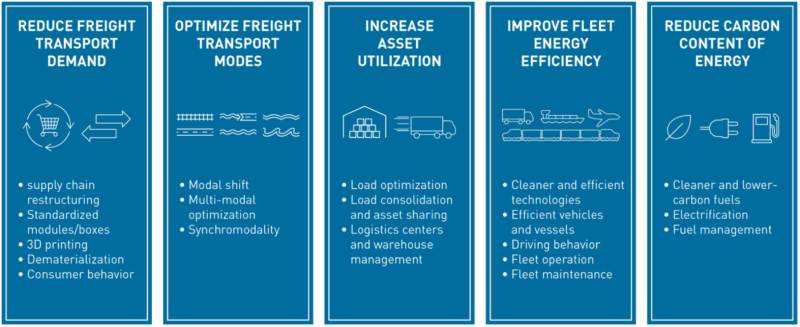6.1
Emissions overview
At a global level, 2017 estimates show that freight contributed 7-8% of total emissions, two thirds of which originated from road freight. For the UK retail industry, tracking all the way through multi-tier supply chains to determine the precise emissions breakdown of each transport mode is extremely challenging. Compared to the global breakdown shown below, it is expected that sea, rail and air freight are less impactful,[53] with road freight contributing most significantly to emissions across the supply chain.

Figure 6.1a: Freight contributions to global emissions, from Smart Freight Centre
The most common measure of emissions based on weight and distance is ‘kgCO2e per tonne km,’ with an emissions factor reported for moving one ‘tonne of goods by one kilometre.’ Defra provides detailed emissions factors for freight movements per tonne km for all modes, and a range of vehicle classes.
There are a number of opportunities to reduce emissions from freight networks. The figure below summarises five categories for potential improvements, and a selection of recommended actions are developed further in this section.

Figure 6.1b: Pillars of freight decarbonisation, from Smart Freight Centre
[53] Much of sea freighting, the next largest emissions contributor, will relate to industrial materials and processes entirely separate to customer retail (e.g. construction, automotives, aerospace, etc)